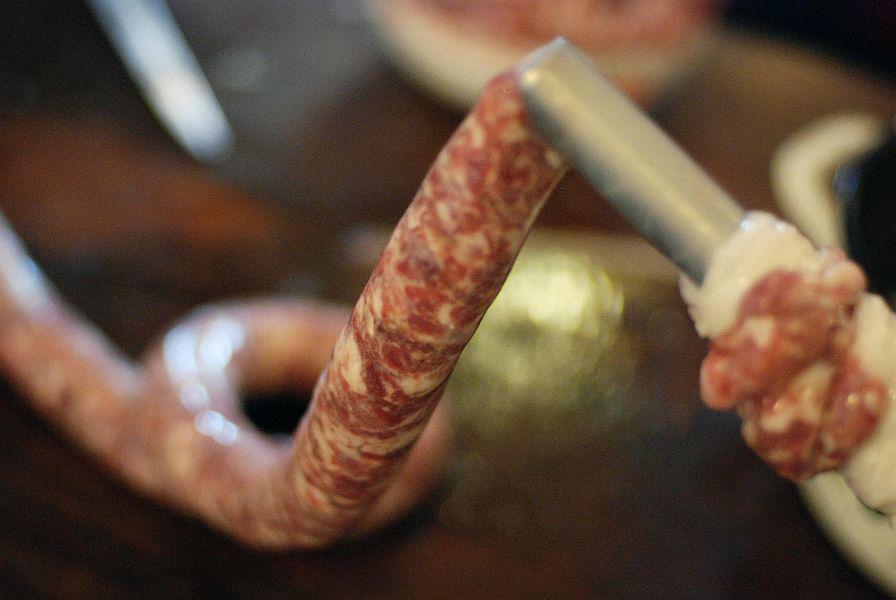
Each winter, a familiar scene is played out in villages across Slovenia: a pig is slaughtered as part of an ancient tradition known as “koline.” Much of the event has remained unchanged for centuries and it remains an integral part of Slovenian country life.
It’s no coincidence that the slaughter almost invariably takes place in the winter months: That’s when pig fodder tended to become scarce, which made having too many animals an unaffordable luxury. On a predetermined date, the entire village gathered for “koline.” Before the big day, the women prepared the seasonings and other ingredients needed to make sausages and other meat products. Even the children often took part in the event; their task was to hold the pig by its tail as it was being slaughtered. As the pig’s neck was being cut, the women made sure that its blood was drawn into a large vat and then stirred to prevent it from becoming congealed prematurely.
The slaughter of pigs was followed by a busy period during which sausages and other meat products were made from the slaughtered animals. Each villager had a specific role: Some cut the carcass to smaller segments, while others had to clean the intestines, which were later used as sausage casings. Socializing, storytelling – and hard liquor in large quantities -- usually made the work pass more quickly.
Many elements of “koline” survive to this day. In some parts of the country, the pig’s hairs are burned off– an ancient tradition. After the pig is quartered, the making of various pork products begins. Seasonings are added to the blood, which is then congealed and is used as the key ingredient of blood sausage. Even before the first sausage is made, the women serve soup made from the pig’s bones. Other products made from the pig vary from region to region; they include prosciutto (“pršut”), ham, a typically Slovenian type of sausage called “kranjska klobasa,” and pork cracklings known as “ocvirki.”
Before modernization changed rural lifestyles, almost all villagers took part in “koline,” and the event – which lasted for several days –was transformed into a village fete. At the end, the participants were guaranteed a varied supply of pork products for the year ahead.
Electrical devices changed the tradition by allowing the work to be done by just a few people. Still, many villages are now reviving “koline” as an important social event. They have come to realize that the ancient celebration can still bring communities together in an age when modernization has weakened traditional bonds in the Slovenian countryside. For at least a few days in the winter, an ancient tradition lives on in villages throughout the country.

































































